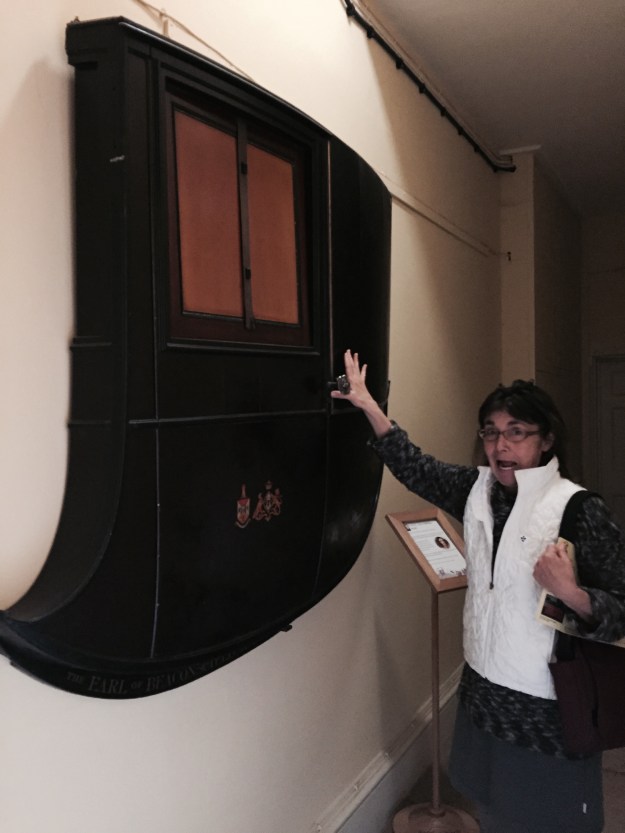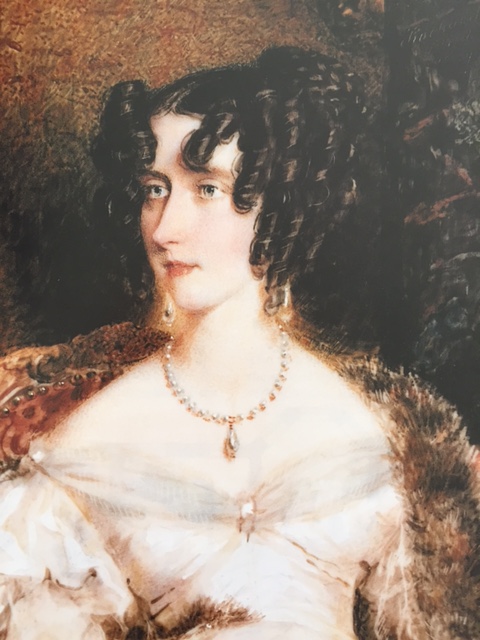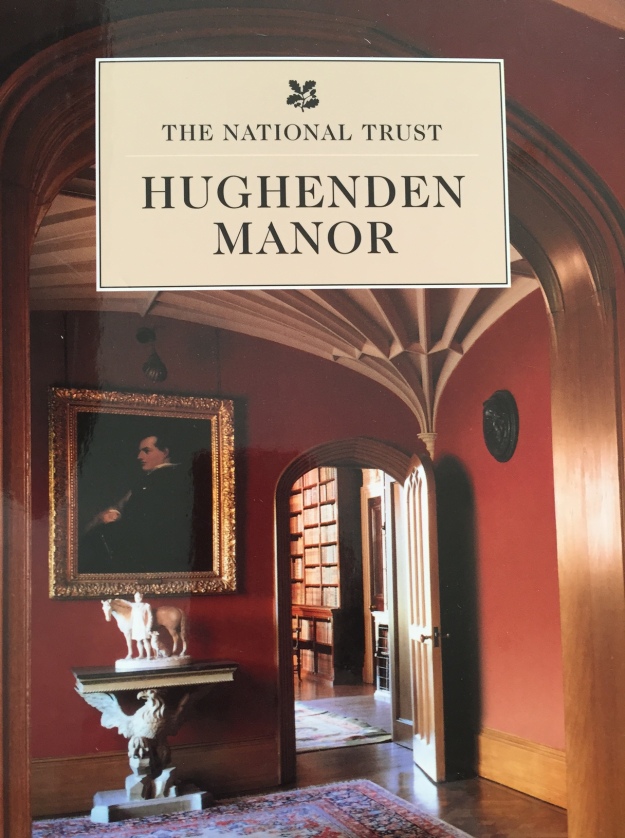Why is a Victorian carriage door prominently displayed on a wall at Hughenden, the country home of Queen Victoria’s friend and Prime Minister, Benjamin Disraeli? The Prime Minister himself removed it from the carriage and preserved it as a tribute to his wife, Mary Anne. One evening the ambitious politician and his doting wife set off from his London house to Parliament, where he was to deliver a very important speech. When the carriage door was closed, it slammed shut on Mary Anne’s thumb. What did she do? She suffered in silence, all the way to Westminster. She didn’t want to upset the man before his speech. A placard next to the carriage door explains that Mary Anne said not a word until Disraeli was safely out of the carriage and on his way into the corridors of power. The placard remarks drily that her words when her thumb was released were not recorded.
 Mary Anne was 12 years older than her husband, and the marriage began as one of convenience. But it grew into a true love match.
Mary Anne was 12 years older than her husband, and the marriage began as one of convenience. But it grew into a true love match.

According to the guidebook sold at Hughenden, Disraeli was a novelist and something of a playboy in 1830s London. He had written a novel, Vivian Grey, which was a thinly veiled self-portrait of a young man on the make. His friend Bulwer-Lytton described him thus: he wore “green velvet trousers, a canary coloured waistcoat, low sleeves, silver buckles, lace at his wrists, his hair in ringlets.” He cut a wide swath through bohemian London salons, finally gaining an entree into the highest circles. He tried five times for a seat in Parliament before he won an election. His maiden speech was a disaster; he was shouted down. What worked in drawing rooms did not work in the House of Commons. He famously ended by saying, “I will sit down now, but the time will come when you will hear me.”

Mary Anne, my photo from Hughenden guidebook
What Disraeli needed was a rich wife. He met Mary Anne Wyndham Lewis in 1832, when she was just another older married woman he enjoyed flirting with. He thought her “a pretty little woman, a flirt and a rattle” which according to the guidebook meant “incessant chatterer.” But her deep-pocketed husband obligingly died in 1838, leaving her a rich widow. Her appeal increased and Disraeli married her in 1839.
 Disraeli soon learned what a treasure he had found. He wrote, “There was no care which she could not mitigate, and no difficulty which she could not face. She was the most cheerful and the most courageous woman I ever knew.” High praise indeed; Disraeli had known and depended on many, many women in his rise to power in Victorian England.
Disraeli soon learned what a treasure he had found. He wrote, “There was no care which she could not mitigate, and no difficulty which she could not face. She was the most cheerful and the most courageous woman I ever knew.” High praise indeed; Disraeli had known and depended on many, many women in his rise to power in Victorian England.

A visit to Hughenden is a window into the Victorian past.

The estate is under the care of the National Trust, and beyond the quintessentially Victorian rooms there’s a surprise, new since I first visited years ago. The estate was a secret location for surveillance work which was crucial to victory in World War II. This work was so secret that not even the National Trust knew a thing about it until very recently. I’ll be writing about what went on in the wartime rooms and the icehouse soon.
Join me next time for more explorations in the art and history of Europe and the British Isles!




Very interesting story. I love the pictures. The picture of you with your thumb on the carriage door made me laugh.